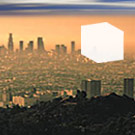SCIENCE
PUBLIC SMOG has a Lower Park and an Upper Park, each for a discrete environmental challenges to the health of the atmosphere: Smog in the troposphere, and increasing greenhouse gas concentrations in the stratosphere.
Smog generally occurs in the lower part of the atmosphere, less than 5 km above the ground. Smog is a combination of airborne particulate matter, like soot, and invisible toxic gases including ozone (O3), carbon monoxide (CO), sulfur dioxide (SO2), and carcinogens.
Some of these compounds are emitted directly. Others are formed in the air from emitted pollutants, such as ozone from nitrogen oxide (NOx) photochemistry. Due to the importance of these secondary effects, smog mitigation often involves reduction of NOx emissions.
Greenhouse gases – eg carbon dioxide (CO2), methane (CH4), nitrous oxide (N2O) trap outgoing radiation from the earth, allowing the earth to be warm enough to sustain life.
However, due to human activity, notably the burning of fossil fuels, the concentrations of greenhouse gases in the atmosphere are increasing at an exponential rate, meaning that the rate at which CO2 is added to the atmosphere grows larger each year. This causes the average temperature to rise, which leads to potentially catastrophic impacts on the earth’s climatic balance.
“Predictions of the next century show global temperature increases of up to 6oC (ten times the temperature change we have already seen) with land areas warming more than the average. We are looking at a future where impacts like coastal flooding, reduced crop yields, elevated rates of climate-related illness, and disrupted energy supply are virtually certain.” (Source: David Suzuki)



